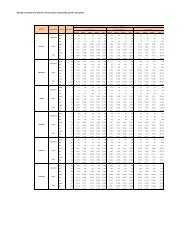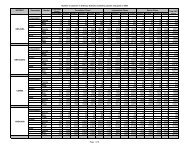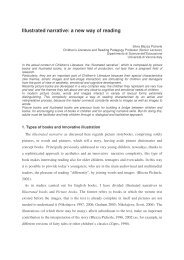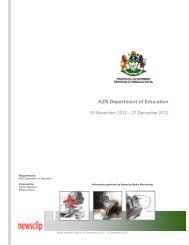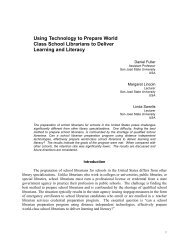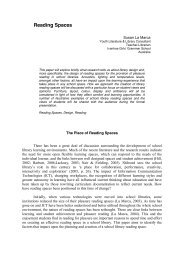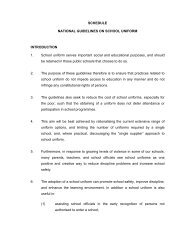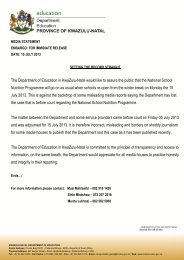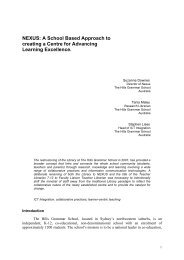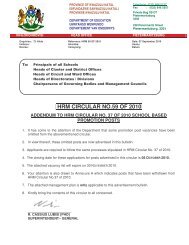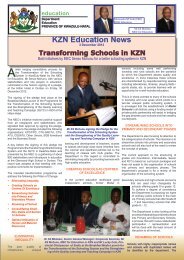GUIDELINE FOR TEACHING AND WRITING ESSAYS ... - Thutong
GUIDELINE FOR TEACHING AND WRITING ESSAYS ... - Thutong
GUIDELINE FOR TEACHING AND WRITING ESSAYS ... - Thutong
Create successful ePaper yourself
Turn your PDF publications into a flip-book with our unique Google optimized e-Paper software.
4.2.3 Post card<br />
A post card is a short text that is confined to a limited space. The space limit forces the writer<br />
to squash in as much information as possible. The style of writing is casual and informal.<br />
However, for purposes of submission for assessment, learners are advised to avoid slang or<br />
colloquial language.<br />
See the example below:<br />
Stamp<br />
Dear Daddy<br />
Do I owe you an apology? I am so grateful that you did not give up on me<br />
when I refused to take the hiking trip. The mountains, the fresh air, the<br />
sparseness of the countryside. Incredulous! Can you guess who the cock<br />
is at the camp? Your one and only daughter. The very one you have to<br />
drag out of bed every weekday.<br />
Dad, I really needed this. I feel refreshed and ready to take the world<br />
again. Thank you.<br />
Mr Osrov Petrvska<br />
P.O. Box 321<br />
Martindale<br />
8787<br />
I have to run along now. Give my regards to mom and Matena.<br />
Love you all.<br />
Theressa<br />
4.2.4 Giving direction<br />
We use directions when we are telling someone how to get somewhere. The imperative<br />
form (the infinitive without the word ‘to’) is usually used. Although the subject ‘you’ is not<br />
stated, it always refers to the second person representing an interaction between the<br />
speaker and the listener.<br />
Consider the following when giving direction:<br />
• be concise and clear.<br />
• the directions must be in chronological order.<br />
• always refer to a specific direction.<br />
• indicate the approximate distance.<br />
• give the approximate number of streets to be crossed to reach the destination.<br />
It will give the person a sense of when to stop and ask someone else for<br />
further directions in case (s)he has overshot the mark.<br />
• if possible, provide information about landmarks along the way, e.g. You will<br />
pass the High School on your left.<br />
32




